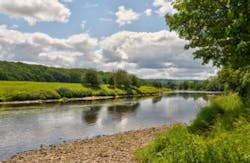EPA awards two Great Lakes Restoration Initiative grants in Michigan
DETROIT — The U.S. Environmental Protection Agency (EPA) has announced the award of two Great Lakes Restoration Initiative grants totaling $1.25 million to fund green infrastructure projects in Southeast Michigan to improve water quality in the Great Lakes, according to a press release.
"Detroit and St. Clair Shores will use these EPA Great Lakes Restoration Initiative Shoreline Cities grants for green infrastructure projects to prevent stormwater from carrying contamination into the Great Lakes," said EPA Region 5 Administrator/Great Lakes National Program Manager Susan Hedman. "Green infrastructure also helps to prevent the type of flooding that occurs as a result of the increasingly frequent extreme precipitation events that have hit the Midwest in recent years — a pattern may intensify as the result of climate change."
Detroit will use the $1 million grant for two green infrastructure projects in the Detroit Water and Sewerage Department’s Near East Side Drainage District, the release reported.
The first project will transform publicly owned vacant lots on Detroit’s Lower Eastside into green space consisting of meadows, trees and other vegetation to reduce the discharge of untreated stormwater into the city’s combined sewer system, continued the release, while the second project involves installing green infrastructure at Detroit’s Recovery Park which will also reduce the discharge of untreated stormwater to the sewer system.
According to the release, St. Clair Shores will use the $250,000 grant to install rain gardens and porous pavement at Kyte Monroe Park to capture and treat stormwater runoff which flows through the storm sewer directly to Lake St. Clair, preventing approximately 95,000 gallons of polluted stormwater from entering Lake St. Clair during significant storms.
Read the full release here.
